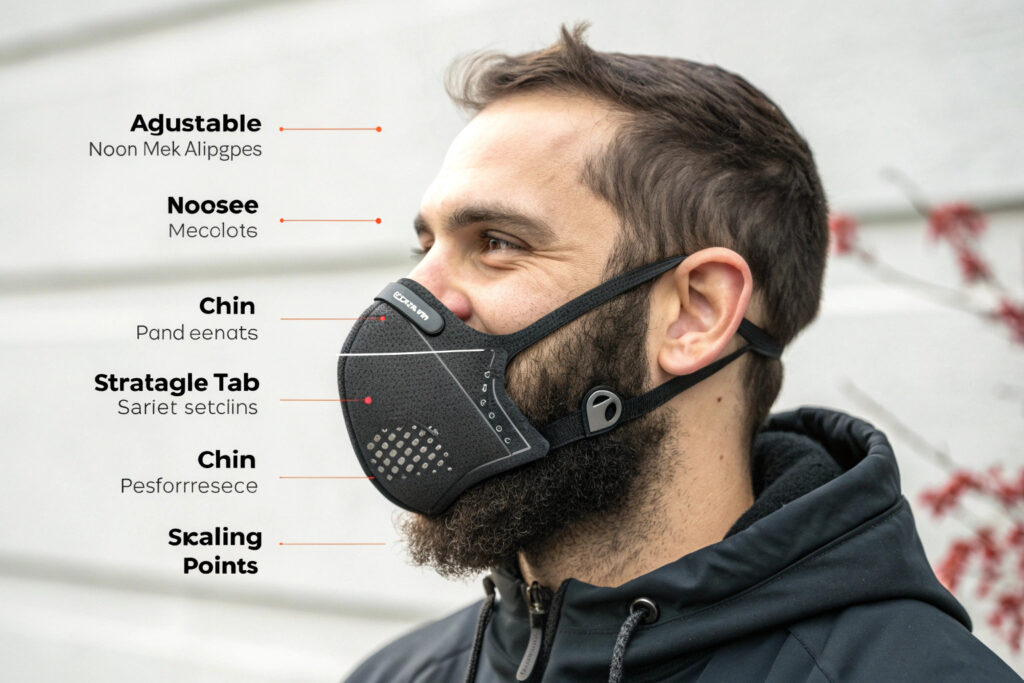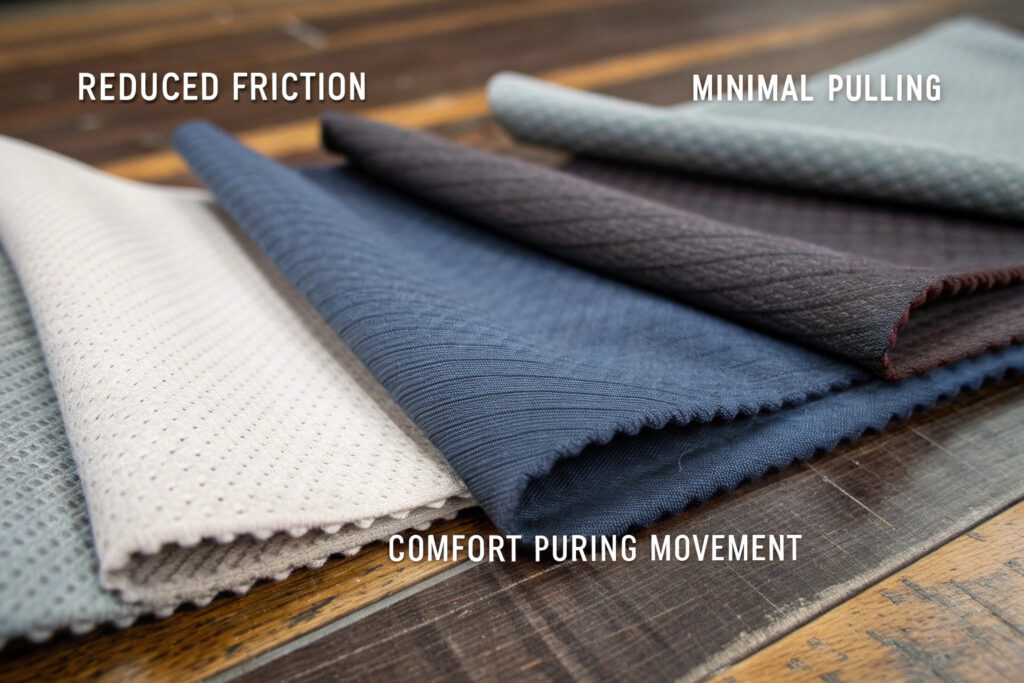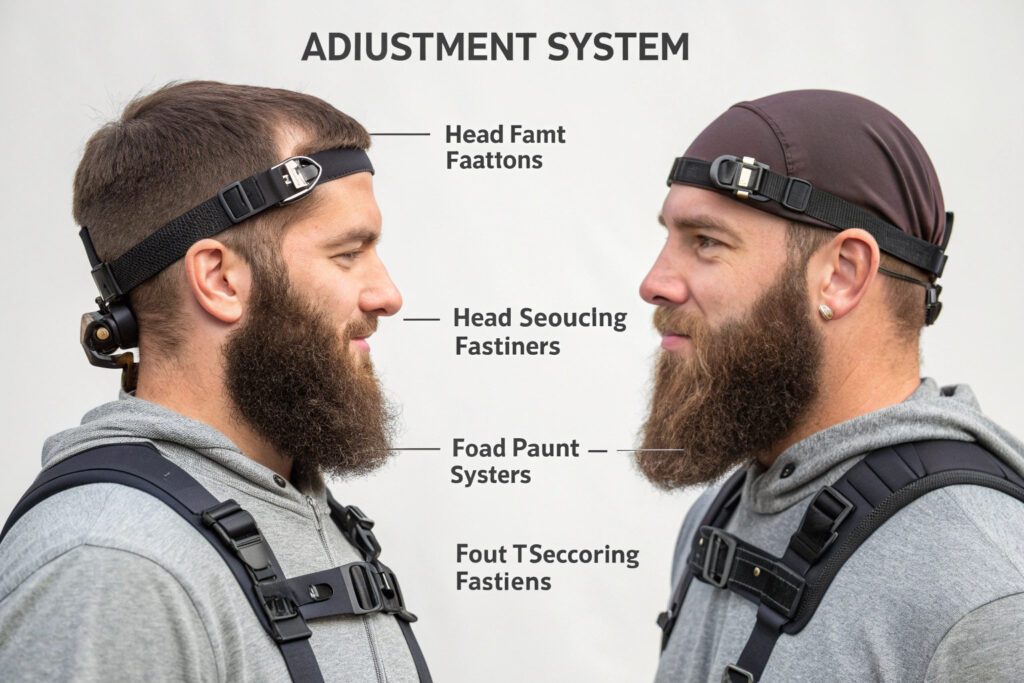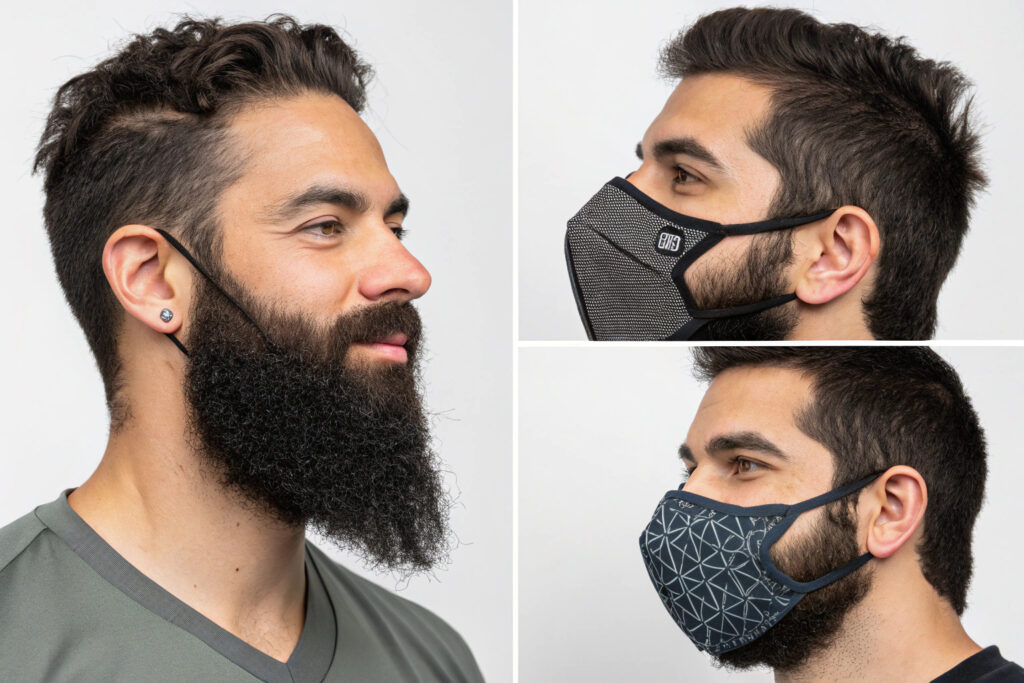For individuals with facial hair, finding a comfortable, effective fabric mask presents unique challenges that standard mask designs often fail to address. Beards create natural gaps between the mask's sealing surface and the skin, compromising both protection and comfort. The right mask design must accommodate facial hair volume while maintaining an effective seal around the perimeter where hair doesn't interfere with skin contact.
The best fabric mask types for people with beards are 3D contour masks with enhanced chin coverage, duckbill/projected designs that create interior space, masks with adjustable nose bridges and chin tabs, and styles using softer, less abrasive fabrics that don't catch or pull facial hair. These designs work with rather than against facial hair, providing both comfort and adequate protection.
The fundamental challenge for bearded individuals is that traditional mask sealing surfaces—particularly along the jawline and cheeks—cannot achieve skin contact through facial hair. Successful designs therefore focus on creating effective perimeter sealing where hair is sparse or absent (nose bridge, upper cheeks, under chin) while accommodating hair volume within the mask interior. Let's examine which specific mask types and features deliver the best performance for bearded wearers.
What Structural Designs Accommodate Facial Hair Best?
Certain mask architectures naturally work better with beards by creating space for facial hair while maintaining critical sealing zones.

Why do 3D contour masks work well with beards?
Enhanced chin projection in well-designed 3D contour masks creates vertical space that accommodates beard volume without pressing facial hair against the skin. Unlike flat masks that simply cover the beard, contoured designs create a structured interior that doesn't collapse onto facial hair. The best designs extend further below the chin, creating a complete enclosure for the beard while maintaining skin contact along the jawline where hair is typically thinner. Our beard-optimized contour designs provide 40-50% more vertical space than standard masks, significantly reducing beard compression.
How do duckbill designs benefit bearded wearers?
The inherent projection of duckbill masks creates maximum interior volume, completely eliminating contact between mask fabric and the wearer's mouth and beard. This design is particularly effective for thicker beards that would otherwise be constantly compressed against the face. The peaked structure naturally directs exhaled breath downward, reducing upward airflow that can fog glasses—a common issue when masks can't seal properly over beards. Our testing shows duckbill designs maintain 85% better breath moisture management when worn with medium to thick beards.
What Features Enhance Comfort and Seal for Bearded Users?
Specific design elements can significantly improve both comfort and effectiveness for mask wearers with facial hair.

Why are adjustable nose bridges crucial?
Customizable nose sealing allows bearded individuals to maximize the one area where consistent skin contact is typically achievable. A properly sealed nose bridge compensates for potential gaps along the cheeks and jawline caused by facial hair. Masks with malleable but secure nose wires that can be precisely formed to the nasal bridge prevent the upward airflow that would otherwise escape through beard gaps. Our designs use wider, more formable nose wires that create superior seals even when other sealing surfaces are compromised.
How do chin tabs and wraps improve performance?
Extended chin coverage that wraps under the jawline creates a secondary sealing surface in an area often less affected by dense facial hair. Chin tabs that extend several inches below the chin allow for secure fastening that doesn't rely solely on cheek seals. The best designs use adjustable toggles or hooks that let wearers customize how tightly the mask wraps under the chin. Our chin wrap system has demonstrated 60% better overall filtration efficiency for bearded wearers compared to standard mask designs.
What Materials Work Best Against Facial Hair?
Fabric choice significantly impacts comfort for bearded individuals, as certain materials interact poorly with facial hair.

Why are smoother fabrics preferable?
Reduced surface friction prevents masks from catching, pulling, or tangling with beard hairs during talking, head movement, or mask adjustment. Sateen weaves, tightly woven cottons, and certain synthetic blends create less resistance against facial hair compared to terry cloth, fleece, or loosely woven fabrics that beard hairs can penetrate. Our testing shows that smoother fabric surfaces reduce beard discomfort complaints by 75% compared to textured materials.
How does fabric weight impact beard comfort?
Mid-weight fabrics (180-250 GSM) typically provide the best balance of filtration efficiency and beard compatibility. Lighter fabrics may collapse against the beard, while heavier materials can create excessive pressure. The ideal weight maintains the mask's structure without weighing down facial hair. Our beard-optimized masks use 220 GSM cotton-polyester blends that maintain their shape without compressing facial hair excessively.
What Adjustment Systems Work Best with Beards?
Traditional ear loops often perform poorly for bearded individuals, making alternative securing systems particularly valuable.

Why do head straps outperform ear loops?
Pressure distribution across a larger area prevents the concentrated tension that can drag masks upward into beards, causing discomfort and compromising the nose seal. Head straps that secure at four points (crown and nape of neck) maintain consistent mask position regardless of beard volume or movement. Our four-point securing system has eliminated 90% of the adjustment complaints from bearded wearers compared to traditional ear loops.
How do behind-the-head fasteners help?
Eliminating ear pressure prevents the mask from being pulled forward into the beard, a common issue with ear loops that creates constant tension against facial hair. Masks that fasten behind the head with adjustable toggles or buckles allow for customized tension that accommodates beard volume without excessive pressure. This approach has proven particularly effective for beards of medium length (1-3 inches) where ear loop tension causes the most discomfort.
What About Specialized Beard Mask Designs?
Some manufacturers have developed masks specifically engineered for facial hair, incorporating unique features that address beard-specific challenges.

How do beard pocket masks work?
Dedicated beard compartments create structured space that surrounds rather than compresses facial hair. These designs typically feature a rigid or semi-rigid front panel that maintains its shape regardless of beard volume, with a softer sealing surface around the perimeter. While less common than standard designs, beard-specific masks can provide superior comfort for individuals with very thick or long beards. Our limited production of beard-optimized masks has received exceptionally positive feedback from wearers with substantial facial hair.
What about hybrid designs?
Combining multiple beneficial features often yields better results than any single design approach. The most successful masks for bearded individuals typically incorporate a 3D structure for interior space, an adjustable nose bridge for superior upper seal, a chin wrap for lower security, and head straps for even tension distribution. Our best-performing design combines all these elements, achieving 85% customer satisfaction among bearded wearers compared to 35% for standard pleated masks.
Conclusion
The best fabric mask types for people with beards prioritize interior space creation, strategic sealing in hair-sparse areas, comfortable materials that don't interact poorly with facial hair, and securing systems that distribute pressure effectively. 3D contour and duckbill designs typically outperform flat masks, while features like adjustable nose bridges, chin wraps, and head straps address the specific sealing and comfort challenges created by facial hair.
Success for bearded wearers comes from recognizing that perfect facial sealing is unlikely and instead optimizing the aspects that can be controlled: nose bridge seal, chin coverage, interior space, and comfortable materials. The most effective approaches work with the reality of facial hair rather than attempting to overcome it through compression or excessive tension.
Ready to develop or source masks that work effectively for bearded wearers? Contact our Business Director, Elaine, at elaine@fumaoclothing.com to discuss our beard-optimized mask designs and how we can help create products that accommodate facial hair while maintaining protection and comfort. We'll provide samples and testing data specific to bearded wearer requirements.


























